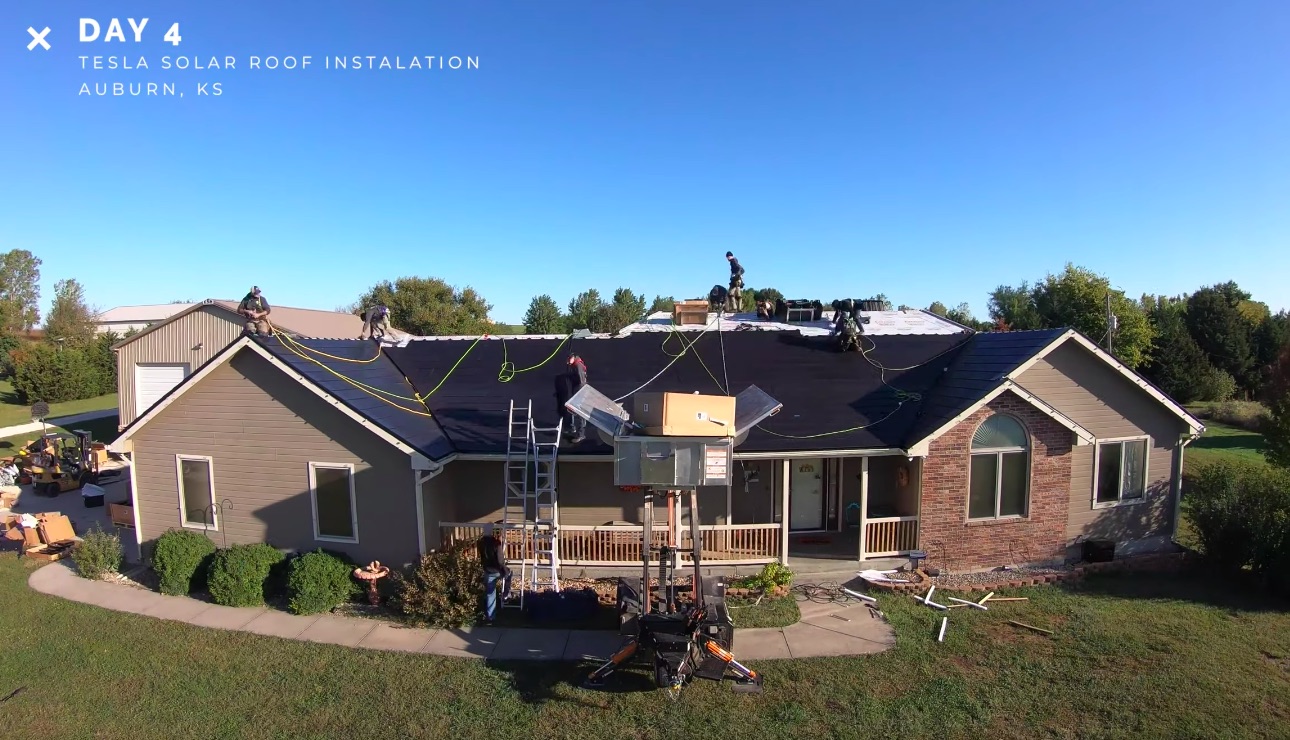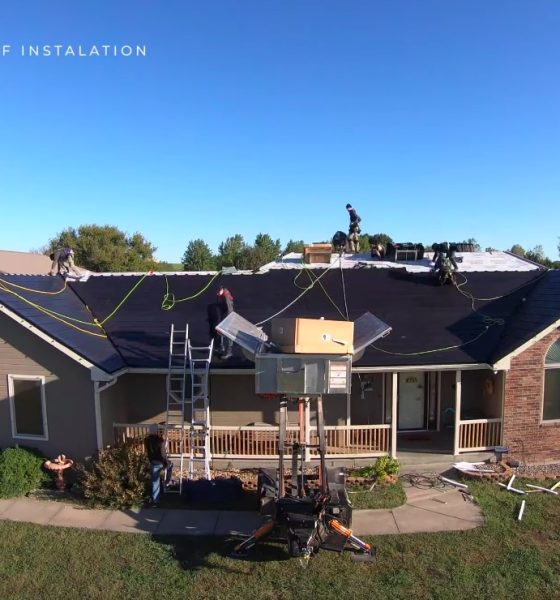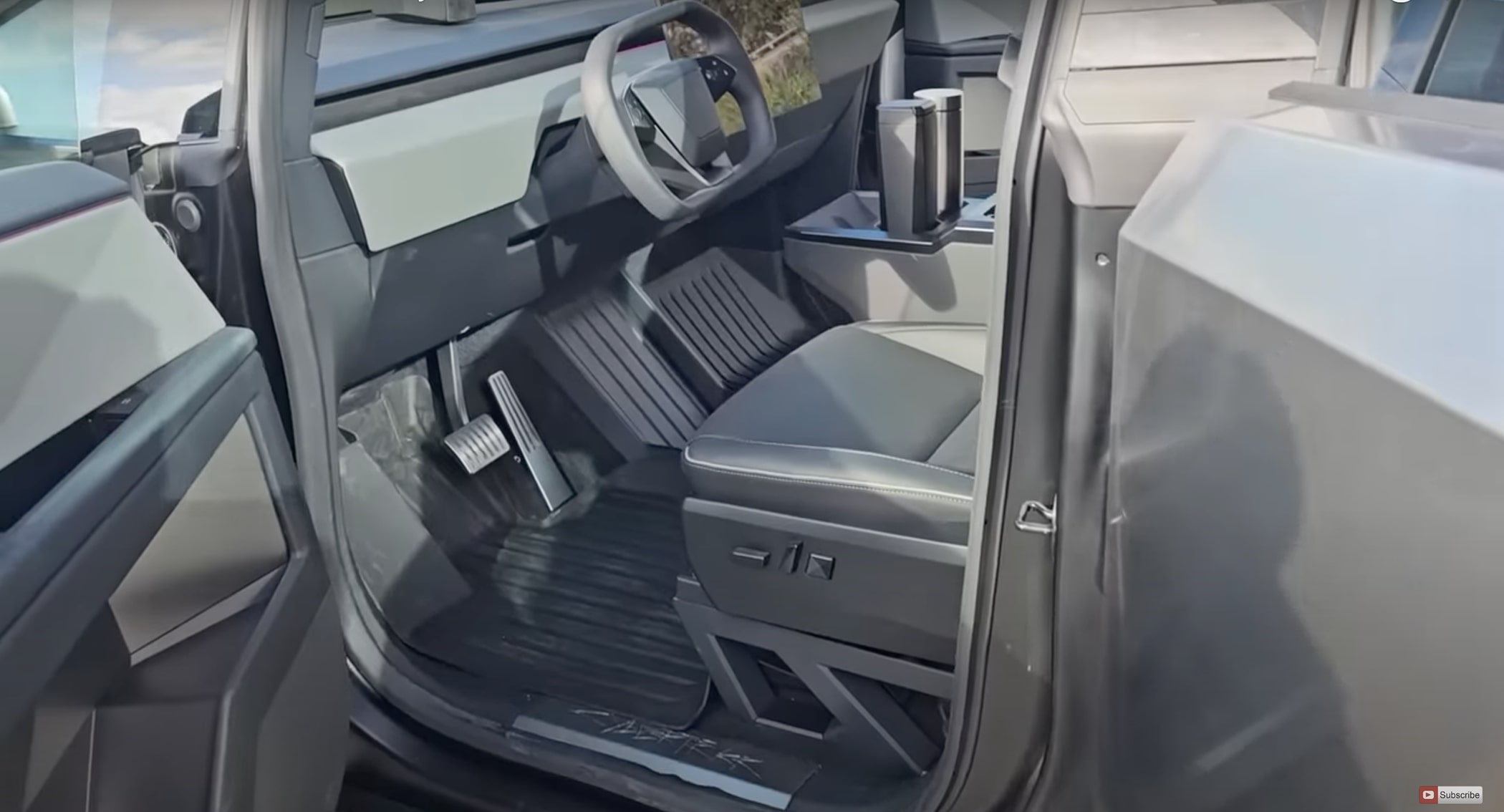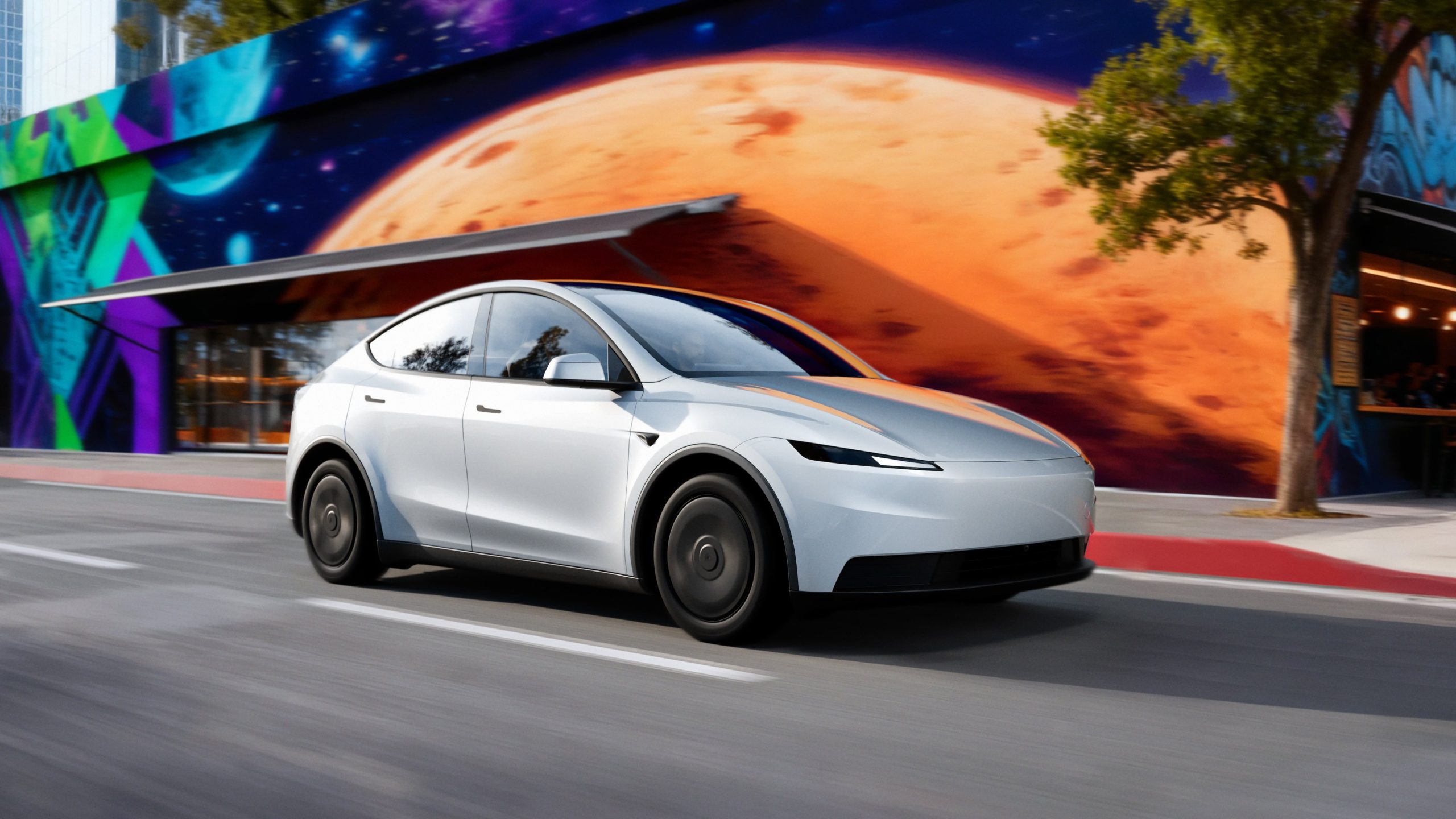

News
Tesla Solar Roof is becoming a stealthy killer, and no one is standing in its way
Tesla executives like CEO Elon Musk may emphasize that the company’s Energy business is just as important as its electric vehicle division, there is little doubt that stationary batteries and solar products are just not as sexy or exciting as, say, all-electric supercars, futuristic pickups, or Full Self-Driving software. Yet as Tesla Energy hits its stride, it is becoming evident that some of the company’s products like the Solar Roof could very well develop into stealthy disruptors on their own.
Tesla Energy’s flagship solar product is the Solar Roof, which was initially unveiled in 2016. Since then, the attractive solar shingles have not really seen a serious ramp, at least until now. Over the following years since its debut, Tesla focused on optimizing and improving the Solar Roof, and the result of these initiatives was the V3 tiles, which were rolled out last year. Tesla’s Solar Roof installations have been steadily ramping then, but just like the company’s energy division, its growth was mostly in the background.
Prior to the third-quarter earnings call, Tesla Energy made headlines after roofing company Weddle and Sons Roofing announced that it was able to complete a full Solar Roof installation in just four days. The project was no joke either, as the system was comprised of 15 kW of Solar Roof tiles that covered about 4,000 sq.ft. (about 372 sq.m). This was a milestone for the company, but as noted by Tesla in its Q3 2020 Update Letter, this installation was not even the fastest to date.
Tesla revealed in its third-quarter Update Letter that it has been able to complete a full Solar Roof installation in just 1.5 days. The company did not indicate the size of the system, though it did provide images depicting the installation’s progress. This update, together with the recent report from Weddle and Sons Roofing, shows that steadily, Tesla’s Solar Roof tiles are becoming faster and easier to install.
Tesla Energy’s growth in the third quarter was incredibly impressive, with the company deploying 57 MW of solar, a 111% growth from the second quarter. The company also announced that 759 MWh worth of battery storage was deployed, an 81% increase from Q2 2020. These milestones tend to be pushed aside by the company’s FSD and EV developments, but if Tesla Energy continues at this pace, it would only be a matter of time before the company’s solar and battery storage systems end up becoming a force that will be incredibly difficult to ignore.
Interestingly enough, the Tesla Solar Roof does not really have a lot of competition in the residential solar market in the United States. Granted, products like the SunTegra Solar Shingles could provide some competition, but the overall lineup of rivals for the electric car maker’s V3 tiles are relatively few. With this in mind, the potential path to dominance for the Tesla Solar Roof seems to be mostly clear. Tesla just has to produce them at volumes that meet demand.
Tesla’s reach into the residential market has actually been growing. EnergySage’s eleventh semiannual Solar Marketplace Intel Report, for one, concluded that the Tesla Powerwall 2 is pretty much dominating the US residential market for stationary storage. The competition, comprised of battery storage units from companies like LG Chem, lie far behind, with the Powerwall dominating about half of the quotes given in EnergySage’s Marketplace.
Elon Musk spoke about the Solar Roof’s potential in Tesla’s recently-held earnings call. Just like before, Musk was optimistic about the shingles, though this time around, the CEO seemed to be more certain about its upcoming disruption. Musk even remarked that the Solar Roof’s status as a “killer product” will become evident next year.
“When you look around the neighborhood in the future, decade from now, what do you want? What products are going to make your life better? What future do you want? And I think a future where we’ve got beautiful roofs generating energy that are tough and resilient and better in every way than a regular roof and alive with energy, that’s the future we want. Solar Roof is a killer product. This will become obvious next year,” he said.

News
Tesla adjusts crucial feature as winter weather arrives

Tesla has adjusted the functionality of a crucial climate feature as Winter weather has started to arrive throughout some parts of the United States. The new feature was highly requested by owners.
Tesla has a Cabin Overheat Protection feature that helps keep the temperature regulated if it reaches a certain threshold. Inversely, it can be used in cold weather as well, which will automatically warm the cabin if it sinks to a temperature that is too low for the owner’s comfort.
This is a great way to keep the cabin either warmed up just enough or cooled down just enough so that it never gets too hot or too cold. Extreme temperatures could damage certain parts of the vehicle or damage personal belongings that are kept inside the car.
Overheat protection is a great thing to have in hot climates like Arizona or Texas, especially with the Premium trims of the Model 3 and Model Y, which feature a glass roof.
Many owners appreciate the feature, but they argue that using it at home will utilize too much energy, especially during extreme temperatures. For a while, many Tesla fans have requested an option to disable this feature when the car is parked at home, which the company recently added, according to Not a Tesla App.
The feature is part of Software Version 2025.44.3, and the release notes state:
“You can now choose Exclude Home when Cabin Overheat Protection or No A/C is enabled.”
Tesla has been great at listening to what owners want with new features, and this is one that will reserve some charge and prevent unnecessary utilization of available power, especially as the car is parked at home. If owners want to condition the cabin or get the car ready for operation with a comfortable interior, they can utilize the Tesla app to adjust the climate.
Elon Musk
Tesla CEO Elon Musk sends rivals dire warning about Full Self-Driving

Tesla CEO Elon Musk revealed today on the social media platform X that legacy automakers, such as Ford, General Motors, and Stellantis, do not want to license the company’s Full Self-Driving suite, at least not without a long list of their own terms.
“I’ve tried to warn them and even offered to license Tesla FSD, but they don’t want it! Crazy,” Musk said on X. “When legacy auto does occasionally reach out, they tepidly discuss implementing FSD for a tiny program in 5 years with unworkable requirements for Tesla, so pointless.”
I’ve tried to warn them and even offered to license Tesla FSD, but they don’t want it! Crazy …
When legacy auto does occasionally reach out, they tepidly discuss implementing FSD for a tiny program in 5 years with unworkable requirements for Tesla, so pointless. 🤷♂️
🦕 🦕
— Elon Musk (@elonmusk) November 24, 2025
Musk made the remark in response to a note we wrote about earlier today from Melius Research, in which analyst Rob Wertheimer said, “Our point is not that Tesla is at risk, it’s that everybody else is,” in terms of autonomy and self-driving development.
Wertheimer believes there are hundreds of billions of dollars in value headed toward Tesla’s way because of its prowess with FSD.
A few years ago, Musk first remarked that Tesla was in early talks with one legacy automaker regarding licensing Full Self-Driving for its vehicles. Tesla never confirmed which company it was, but given Musk’s ongoing talks with Ford CEO Jim Farley at the time, it seemed the Detroit-based automaker was the likely suspect.
Tesla’s Elon Musk reiterates FSD licensing offer for other automakers
Ford has been perhaps the most aggressive legacy automaker in terms of its EV efforts, but it recently scaled back its electric offensive due to profitability issues and weak demand. It simply was not making enough vehicles, nor selling the volume needed to turn a profit.
Musk truly believes that many of the companies that turn their backs on FSD now will suffer in the future, especially considering the increased chance it could be a parallel to what has happened with EV efforts for many of these companies.
Unfortunately, they got started too late and are now playing catch-up with Tesla, XPeng, BYD, and the other dominating forces in EVs across the globe.
News
Tesla backtracks on strange Nav feature after numerous complaints

Tesla is backtracking on a strange adjustment it made to its in-car Navigation feature after numerous complaints from owners convinced the company to make a change.
Tesla’s in-car Navigation is catered to its vehicles, as it routes Supercharging stops and preps your vehicle for charging with preconditioning. It is also very intuitive, and features other things like weather radar and a detailed map outlining points of interest.
However, a recent change to the Navigation by Tesla did not go unnoticed, and owners were really upset about it.
For trips that required multiple Supercharger stops, Tesla decided to implement a naming change, which did not show the city or state of each charging stop. Instead, it just showed the business where the Supercharger was located, giving many owners an unwelcome surprise.
However, Tesla’s Director of Supercharging, Max de Zegher, admitted the update was a “big mistake on our end,” and made a change that rolled out within 24 hours:
The naming change should have happened at once, instead of in 2 sequential steps. That was a big miss on our end. We do listen to the community and we do course-correct fast. The accelerated fix rolled out last night. The Tesla App is updated and most in-car touchscreens should…
— Max (@MdeZegher) November 20, 2025
The lack of a name for the city where a Supercharging stop would be made caused some confusion for owners in the short term. Some drivers argued that it was more difficult to make stops at some familiar locations that were special to them. Others were not too keen on not knowing where they were going to be along their trip.
Tesla was quick to scramble to resolve this issue, and it did a great job of rolling it out in an expedited manner, as de Zegher said that most in-car touch screens would notice the fix within one day of the change being rolled out.
Additionally, there will be even more improvements in December, as Tesla plans to show the common name/amenity below the site name as well, which will give people a better idea of what to expect when they arrive at a Supercharger.








